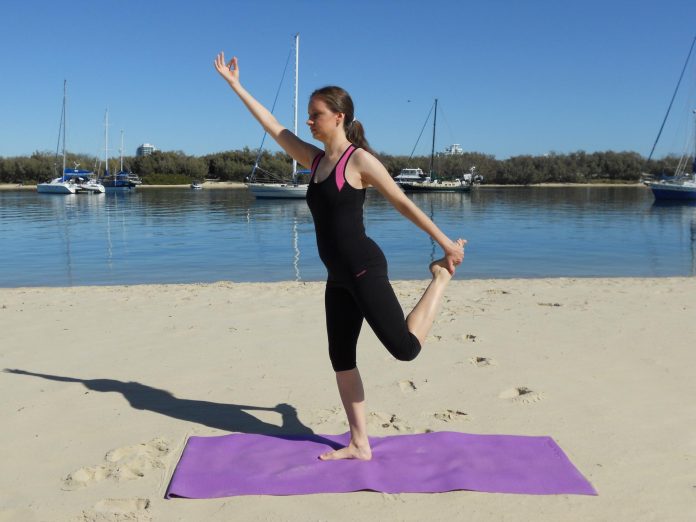Good posture is more than just standing up straight to look confident and poised; it is a fundamental aspect of overall health and well-being. Poor posture can lead to a myriad of issues, including chronic pain, reduced mobility, and even decreased lung function. Fortunately, improving your posture is within reach, and it doesn’t require a complete lifestyle overhaul. By incorporating targeted exercises into your daily routine, you can strengthen the muscles that support proper alignment and develop habits that promote a healthier, more balanced body. In this article, we will guide you through the most effective exercises to enhance your posture, providing you with practical steps to transform your stance and alleviate discomfort. Get ready to stand taller, move more freely, and embrace a new sense of physical confidence.
Understanding the Importance of Good Posture
Good posture is more than just standing up straight; it is a crucial aspect of overall health and well-being. Proper alignment of the spine ensures that your body functions efficiently, reducing the risk of chronic pain, fatigue, and even injury. Maintaining good posture helps in preventing musculoskeletal issues such as back pain, neck pain, and tension headaches. Additionally, good posture can enhance your appearance, boost confidence, and improve breathing and digestion. In today’s digital age, where many of us spend hours hunched over computers and mobile devices, understanding and practicing good posture is more essential than ever.
Several benefits stem from maintaining proper posture, including:
- Reduced Back and Neck Pain: Proper alignment reduces strain on muscles and ligaments.
- Improved Breathing: An aligned spine allows the lungs to expand fully.
- Enhanced Digestion: Proper posture prevents compression of internal organs.
- Boosted Confidence: Standing tall can positively affect your mood and self-esteem.
Identifying Common Postural Issues
Poor posture can lead to a variety of health issues, including back pain, neck strain, and even headaches. Recognizing the most common postural problems is the first step toward correcting them. Forward head posture, rounded shoulders, and anterior pelvic tilt are among the most frequently observed issues.
To help you identify these problems, here are some key indicators:
- Forward Head Posture: Your head juts forward past your shoulders, often due to prolonged screen time.
- Rounded Shoulders: Your shoulders are hunched forward, usually a result of sitting for long periods.
- Anterior Pelvic Tilt: Your lower back arches excessively, causing your pelvis to tilt forward, commonly caused by weak core muscles.
By becoming aware of these issues, you can take targeted actions to correct them and improve your overall posture.

Effective Exercises to Strengthen Your Core
A strong core is fundamental to maintaining good posture and preventing back pain. Incorporating these targeted exercises into your routine can significantly enhance your core strength:
- Planks: Hold a plank position for 30 seconds to a minute, ensuring your body forms a straight line from head to heels. This exercise engages multiple core muscles simultaneously.
- Bicycle Crunches: Lying on your back, bring your knees toward your chest and lift your shoulder blades off the ground. Alternate touching your elbows to the opposite knees in a pedaling motion.
- Russian Twists: Sit on the floor with your knees bent and feet lifted off the ground. Lean back slightly and twist your torso to touch the floor on each side, holding a weight or medicine ball for added resistance.
- Leg Raises: Lie flat on your back with your legs straight. Slowly lift your legs to a 90-degree angle and lower them back down without touching the ground. This exercise targets the lower abdominal muscles.
Consistency is key; aim to perform these exercises at least three times a week. With time, you will notice improved stability, reduced back pain, and a more upright, confident posture.

Stretching Techniques to Alleviate Muscle Tension
Incorporating effective stretching techniques into your daily routine can significantly reduce muscle tension and enhance your posture. Here are some essential stretches to help you get started:
- Neck Stretches: Gently tilt your head towards your shoulder and hold for 15-30 seconds. Repeat on the other side to release tension in your neck muscles.
- Shoulder Rolls: Roll your shoulders forward and backward in a circular motion to improve flexibility and reduce tightness.
- Chest Stretch: Stand in a doorway with your arms at 90 degrees, then step forward slightly to stretch your chest muscles. Hold for 20-30 seconds.
- Hamstring Stretch: Sit on the ground with one leg extended and the other bent. Reach towards your toes, keeping your back straight. Hold for 15-30 seconds on each side.
- Cat-Cow Stretch: Get on all fours and alternate between arching your back upwards and dipping it downwards. This dynamic stretch helps relieve back tension.
By integrating these stretches into your exercise regimen, you’ll not only alleviate muscle tension but also contribute to better overall posture.





